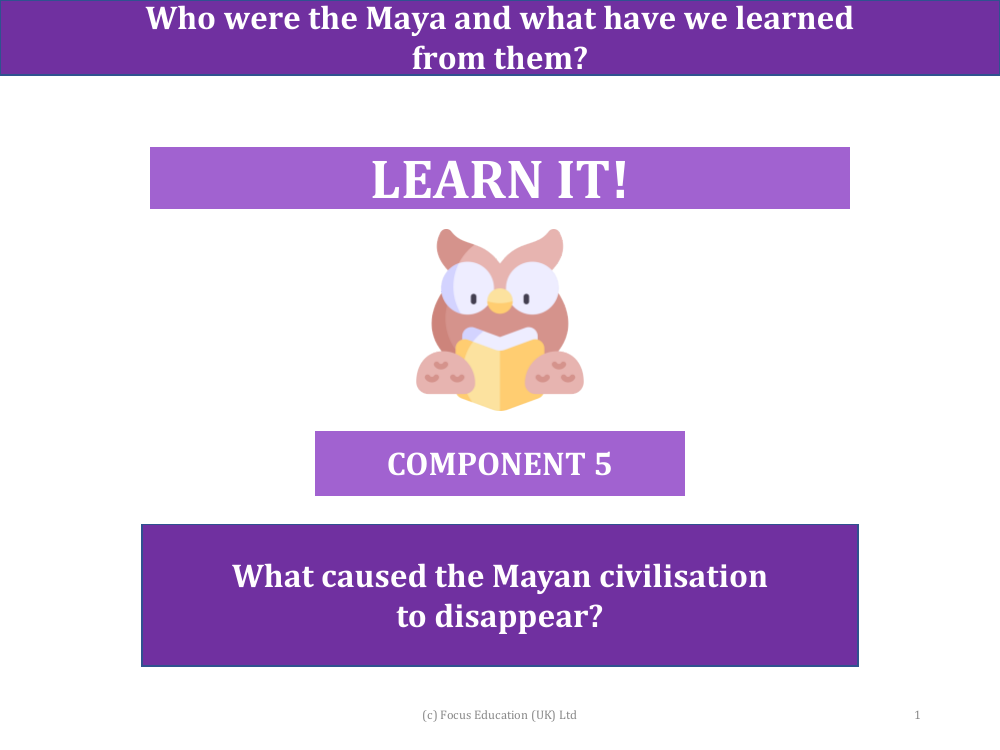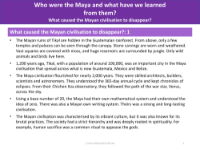What causes the Maya civilisation to disappear? - Presentation

History Resource Description
The mysterious disappearance of the Mayan civilisation is a topic that has intrigued historians and archaeologists for years. The Maya, known for their advanced knowledge in architecture, mathematics, and astronomy, thrived for nearly 2,000 years across regions that are now part of Guatemala, Mexico, and Belize. Despite their sophisticated society and cultural achievements, the Maya civilisation saw a rapid decline during the ninth century, leading to the abandonment of cities like Tikal. Theories about the cause of their collapse are varied and include warfare, invasion, disease, and environmental factors such as over-farming. However, the consensus among scholars is that the downfall was likely due to a combination of several factors, rather than a single cause.
One particularly interesting theory was proposed by Dick Gill, who, after a career in banking, dedicated himself to studying the Maya. Gill's hypothesis centred on the impact of a severe drought, drawing parallels from his childhood memories of droughts in Texas. His research took him through historical records and consultations with archaeologists, leading to the discovery of evidence for droughts in the Maya region. The turning point came when a team from the University of Florida analysed mud cores from a lake in Mexico's Yucatan region, revealing that the ninth century was the driest period in 7,000 years. This finding provided the direct evidence Gill needed to support his theory that an extreme drought may have played a crucial role in the collapse of the Mayan civilisation.





